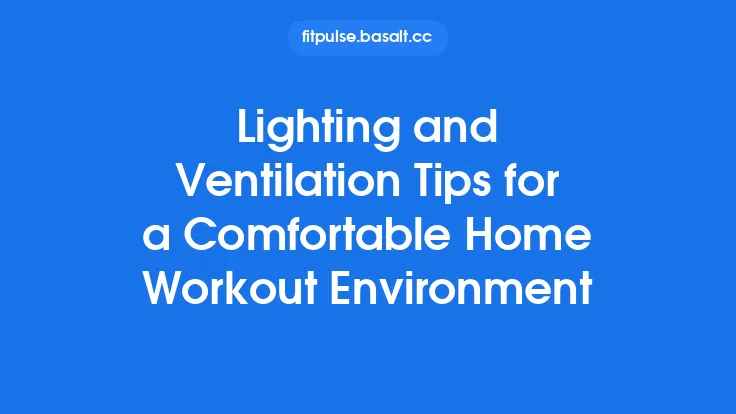When you’re recovering from a workout, a sprain, or a chronic ache, the gentle, steady warmth of a hot pack or heating pad can be a game‑changer. The soothing heat increases blood flow, relaxes tight muscles, and can reduce joint stiffness, helping tissues return to their normal state more quickly. Yet, because heat is a form of energy that can also cause tissue damage if misused, it’s essential to follow evidence‑based safety protocols. Below is a comprehensive guide that walks you through every step of using hot packs and heating pads at home— from selecting the right product to monitoring your skin, setting appropriate time limits, and caring for your equipment—so you can reap the therapeutic benefits without unnecessary risk.
Choosing the Right Hot Pack or Heating Pad
1. Material Matters
- Gel‑filled packs: Retain heat longer than water‑based packs and are less likely to leak. Ideal for deep‑tissue warmth.
- Clay or rice packs: Offer a more gradual heat release and can be microwaved. They conform well to irregular body parts.
- Electric heating pads: Provide consistent temperature control via adjustable settings. Look for models with automatic shut‑off timers (usually 15–30 min).
2. Size and Shape
Select a pack that comfortably covers the target area without excessive overlap onto healthy tissue. For small joints (e.g., wrist, ankle), a compact, flexible pack works best. Larger muscle groups (e.g., quadriceps, back) benefit from rectangular or contoured pads that can be wrapped or secured.
3. Temperature Control Features
- Thermostatic pads: Some premium electric pads maintain a set temperature (e.g., 38 °C, 40 °C) regardless of external conditions.
- Variable heat settings: At least three levels (low, medium, high) allow you to start low and increase only if tolerated.
- Digital displays: Provide real‑time temperature readouts, which are useful for precise dosing.
4. Safety Certifications
Ensure the product meets recognized safety standards (e.g., UL, CE, FDA‑cleared for therapeutic use). Certified devices undergo testing for electrical safety, overheating protection, and material durability.
Understanding Temperature and Heat Transfer
1. Therapeutic Temperature Range
- Mild heat: 38–40 °C (100–104 °F) – suitable for chronic stiffness and mild soreness.
- Moderate heat: 41–43 °C (106–109 °F) – used for acute muscle tightness or post‑exercise recovery.
- Avoid >44 °C (111 °F): Temperatures above this threshold increase the risk of superficial burns and can exacerbate inflammation.
2. Heat Transfer Mechanisms
- Conduction: Direct contact between the pack and skin transfers heat. The rate depends on the pack’s material conductivity and the pressure applied.
- Convection (for electric pads with airflow): Some pads incorporate low‑speed fans to distribute warmth evenly, reducing hot spots.
3. Thermal Conductivity of Skin Layers
The epidermis and dermis act as insulators; deeper tissues (muscle, fascia) receive heat more slowly. This lag means that a pack may feel comfortable on the surface while the underlying tissue continues to warm for several minutes. Monitoring is therefore essential throughout the session.
Establishing Safe Duration and Frequency
1. Standard Session Length
- 15–20 minutes for most electric heating pads.
- 10–15 minutes for microwaveable or gel packs, as they tend to lose heat more quickly.
2. Frequency Guidelines
- Acute injuries (first 48 h): Limit to 1–2 sessions per day, spaced at least 4 hours apart.
- Chronic conditions (e.g., osteoarthritis, muscle tightness): Up to 3 sessions per day may be appropriate, provided skin integrity is maintained.
3. Cumulative Heat Dose
Consider the total heat exposure over a 24‑hour period. Exceeding 60 minutes of continuous heat can increase the likelihood of tissue damage, especially in individuals with reduced sensation (e.g., diabetic neuropathy).
4. Gradual Progression
Begin with the lowest temperature and shortest duration. If no adverse reactions occur, you may incrementally increase either the temperature (by one setting) or the duration (by 2–3 minutes) in subsequent sessions.
Preparing the Skin and Monitoring for Adverse Reactions
1. Skin Inspection
- Pre‑application: Check for cuts, abrasions, rashes, or areas of reduced sensation. Do not apply heat over open wounds or inflamed skin.
- Post‑application: Look for redness, blistering, or swelling. Any sign of burn warrants immediate discontinuation and, if severe, medical evaluation.
2. Protective Barriers
- Thin cloth or towel: Place a lightweight, breathable fabric between the pack and skin to prevent direct high‑temperature contact, especially with electric pads.
- Moisture‑wicking layers: Useful for individuals who sweat heavily; they help maintain a consistent temperature and reduce skin maceration.
3. Sensation Checks
Every 5 minutes, ask yourself (or the patient) to rate the warmth on a scale of 1–10. A comfortable “warm” sensation typically falls around 3–4. If the feeling escalates to “hot” or “painful,” remove the pack immediately.
4. Contraindications
Avoid heat therapy in the following situations:
- Acute inflammation or swelling (first 24–48 h after injury)
- Open wounds, burns, or skin infections
- Areas with impaired circulation (e.g., severe peripheral arterial disease)
- Neuropathy that diminishes temperature perception
- Pregnancy (especially over the abdomen) unless cleared by a healthcare provider
Special Considerations for Specific Conditions and Populations
1. Older Adults
Skin thins with age, and thermoregulatory responses diminish. Use lower temperature settings (38 °C) and limit sessions to 10 minutes, with a protective barrier.
2. Athletes with High Muscle Mass
Larger muscle groups may require longer heating times (up to 20 minutes) to achieve therapeutic depth, but always stay within the 45 °C ceiling.
3. Individuals with Cardiovascular Concerns
Heat can cause vasodilation and lower blood pressure. Those on antihypertensive medication should monitor for dizziness and avoid prolonged sessions.
4. Post‑Surgical Patients
Only apply heat after the surgeon’s clearance, typically after the initial inflammatory phase. Use low‑intensity settings and keep the pack away from incision sites.
5. Children
Children’s skin is more sensitive. Use pediatric‑specific packs that are smaller and have lower maximum temperatures (≤40 °C). Supervise at all times.
Maintenance, Cleaning, and Storage of Heating Devices
1. Cleaning Protocols
- Gel and clay packs: Wipe the exterior with a damp cloth and mild soap. Do not submerge; moisture can degrade the seal.
- Electric pads: Unplug before cleaning. Most have removable, machine‑washable covers; follow the manufacturer’s instructions. The heating element itself should only be wiped with a dry or slightly damp cloth.
2. Inspection for Damage
Before each use, examine cords, plugs, and seams for fraying, cracks, or leaks. Discontinue use of any compromised device to prevent electric shock or hot‑pack rupture.
3. Proper Heating Methods
- Microwaveable packs: Heat in short bursts (15–30 seconds), shaking or rotating between intervals to avoid hot spots. Use a microwave‑safe container and never exceed the recommended power level.
- Electric pads: Set the timer before turning the device on. Avoid covering the pad with blankets or pillows, which can trap heat and cause overheating.
4. Storage Conditions
Store packs in a cool, dry place away from direct sunlight. For gel packs, keep them flat to prevent internal pressure points that could cause leaks.
Integrating Heat Therapy with Other Recovery Strategies
1. Sequential Use with Cold Therapy
While this article focuses on heat, many practitioners employ a “heat‑then‑cold” sequence for chronic conditions: apply heat to relax tissue, then follow with a brief cold application (5–10 minutes) to reduce any secondary swelling. Ensure a minimum 30‑minute gap between modalities to prevent thermal shock.
2. Stretching and Mobility Work
Applying heat immediately before a stretching routine can increase muscle extensibility, allowing a greater range of motion. Perform gentle dynamic stretches within 5 minutes of heat removal for optimal benefit.
3. Massage and Myofascial Release
Heat can enhance the effectiveness of manual therapy by softening connective tissue. Coordinate with a therapist to apply heat for 10 minutes, then proceed with massage while the tissue remains warm.
4. Hydration and Nutrition
Adequate fluid intake supports vascular responses to heat. Consuming electrolytes can help maintain blood pressure stability during prolonged sessions.
Common Questions and Troubleshooting
| Question | Answer |
|---|---|
| Can I sleep with a heating pad on? | No. Continuous heat for several hours can cause burns and disrupt sleep architecture. Use a timer and remove the pad before lying down. |
| My pack feels too hot after a few minutes—what should I do? | Turn off the device or remove the pack, allow it to cool, then re‑apply at a lower setting. Adding a thin towel can also moderate temperature. |
| Is it safe to use a heating pad while exercising? | Not recommended. Heat increases blood flow and may lower blood pressure, potentially leading to dizziness during activity. Use heat after the workout, not during. |
| What if I have a metal implant? | Metal conducts heat efficiently, which can cause localized overheating. Use low‑intensity heat and place a barrier (e.g., cloth) between the pad and the implant. |
| My heating pad keeps shutting off prematurely. | Check if the built‑in safety timer is set to a short duration. If the device shuts off before the timer expires, inspect the cord and plug for damage or consider a malfunctioning thermostat. |
Final Takeaway
Hot packs and heating pads are powerful, low‑cost tools for home recovery when used responsibly. By selecting the appropriate device, respecting therapeutic temperature limits, adhering to evidence‑based session durations, and continuously monitoring skin response, you can safely harness heat to alleviate muscle tension, improve joint mobility, and accelerate the healing process. Pair these protocols with good hygiene, regular equipment checks, and complementary recovery practices, and you’ll create a robust, sustainable routine that supports long‑term health and performance.





